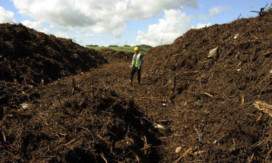SCOTLAND’S LOCAL authorities could struggle to meet tough Government recycling targets set for 2013.
More than 55% of the nation’s household waste was sent to landfill in 2011, according to the latest figures released by the Scottish Environment Protection Agency (Sepa).
It is estimated that a fifth of food and drink in Scotland ends up being thrown away, unnecessarily wasting £430 a year on average for every household in Scotland.
The Scottish Government wants to see 50% of all the household waste produced across the country recycled by the end of 2013, rising to 60% by 2020 and 70% by 2025.
There may be some way to go to meet the first of those figures, however, with just 40.1% of such waste being recycled last year.
Some 13 of the country’s 32 councils were found to be failing to meet the lower targets set for 2010.
Fife residents have once again proven themselves to be the best recyclers, with 54% of household waste being recycled in the region. The figure is also high in Perth and Kinross, at 52.3%.
They were significantly lower in Angus (41.8%) and Dundee (32.4%), but each utilises “recovery”, which can mean methods such as incineration, to reduce reliance upon landfill.
In fact, Dundee City Council sent just 11.6% of its annual household waste to landfill during 2011 beaten only by the Shetlands (3.8%).
It too uses recovery to dispose of much of its waste with some 79.5% recovered according to the Sepa figures.
Among those councils still sending significant amounts of household waste to landfill are Eilean Siar (73.5%), Glasgow (73.3%), Edinburgh (68.8%), Aberdeenshire (66.4%) Aberdeen (64.3%).
This is the first 12-month data set to use the updated recycling rate calculation required by the Scottish Government’s Zero Waste Plan. Only household waste is now used to measure Scotland’s progress towards the recycling targets.
In previous years, the recycling and composting rate was based on Local Authority Collected Municipal Waste (LACMW).
It now includes household collection rounds, other household collections such as bulky waste collections, waste deposited by householders at household waste recycling centres and recycling points/bring banks.
The figures do, however, now exclude non-domestic properties such as hospitals and nursing homes, residential hostels, residential homes, schools, universities and other educational facilities, caravan sites and campsites, self-catering holiday accommodation, prisons and penal institutions, public halls, royal palaces and premises occupied by charities and used for charitable purposes.
Some 17 of Scotland’s 32 councils now provide a household food waste collection service, with six of those councils offering a service that covers every single household in their area.
A further seven councils plan to introduce such collection services in 2013.
SNP MSP Stewart Stevenson said: “Christmas is traditionally a time when people celebrate and eat well, but at a time of excess it is worth stopping to think about what happens when we waste food and drink.
“Households who are spending more than they need to on food are facing an unneeded financial drain on their resources.
“The cost of wasting food and drink quickly adds up and costs every household in Scotland an average of £430 a year.
“That is completely unnecessary and is money that people can ill afford during these difficult financial times, so it is essential that local authorities do all they can to assist people in reducing food waste.”
mmackay@thecourier.co.uk
